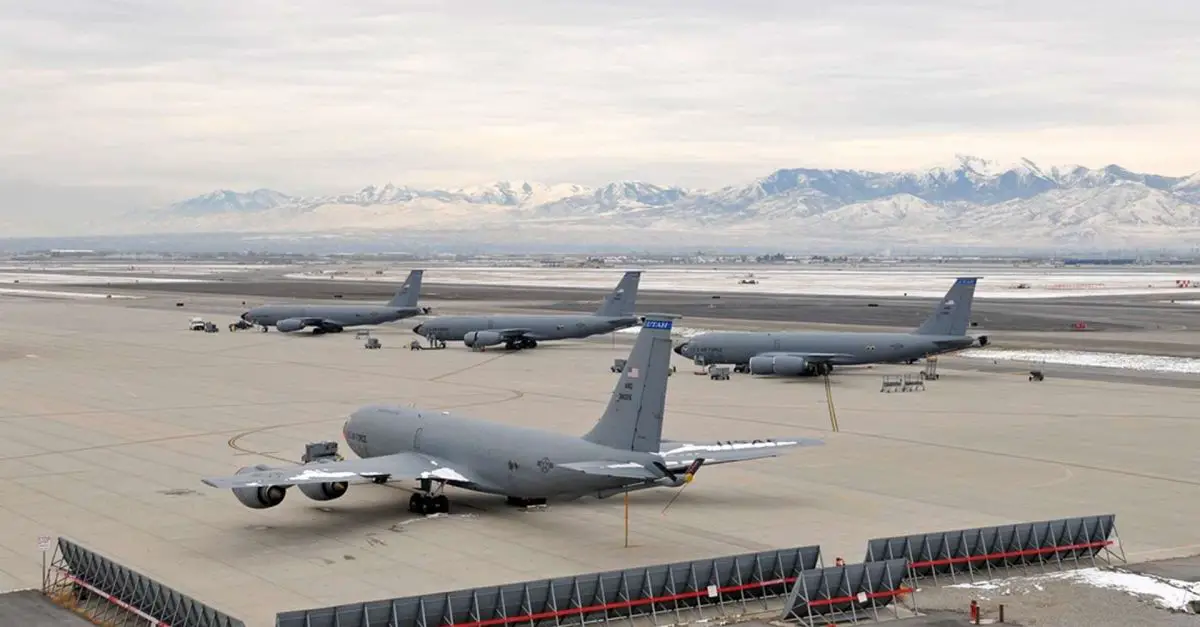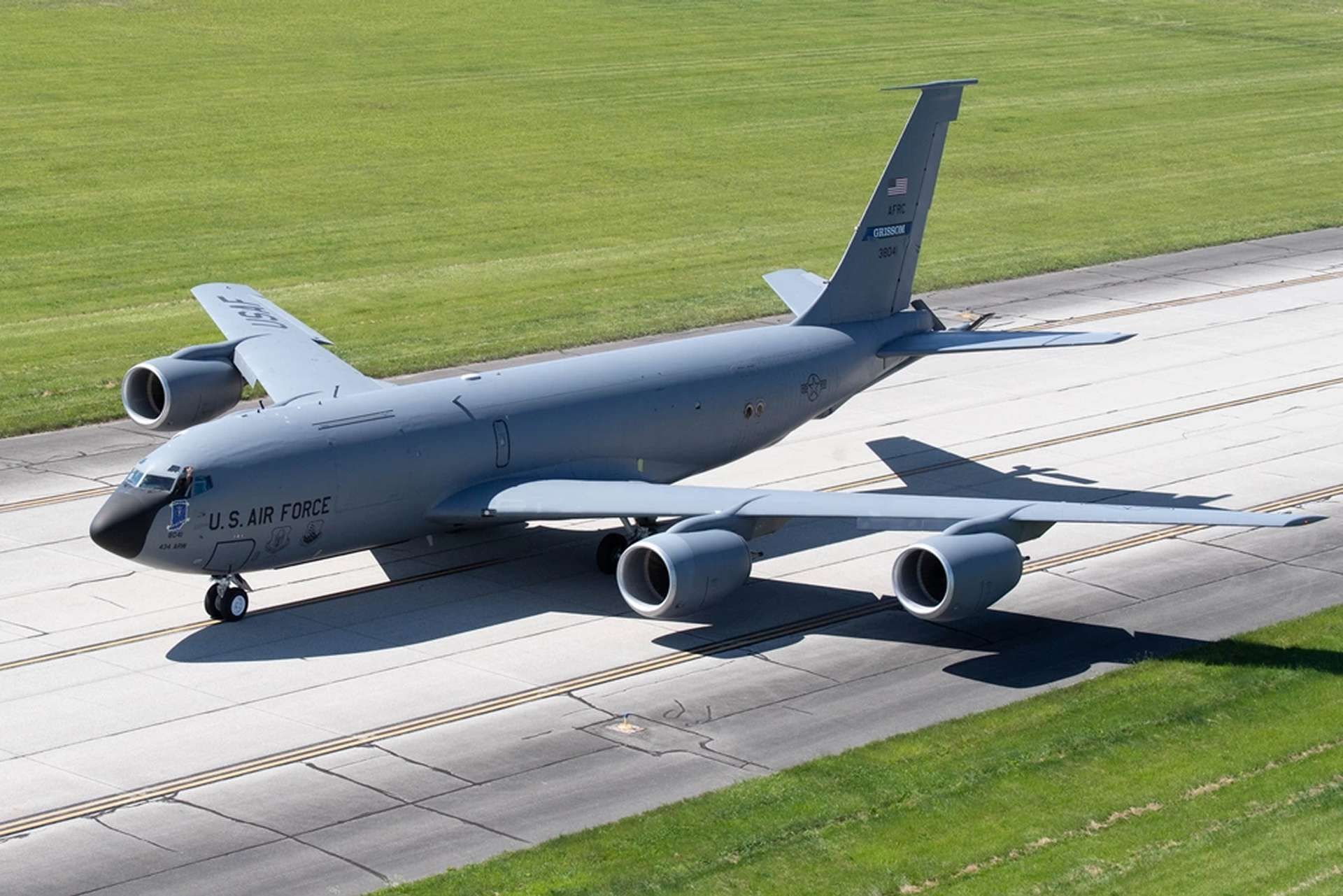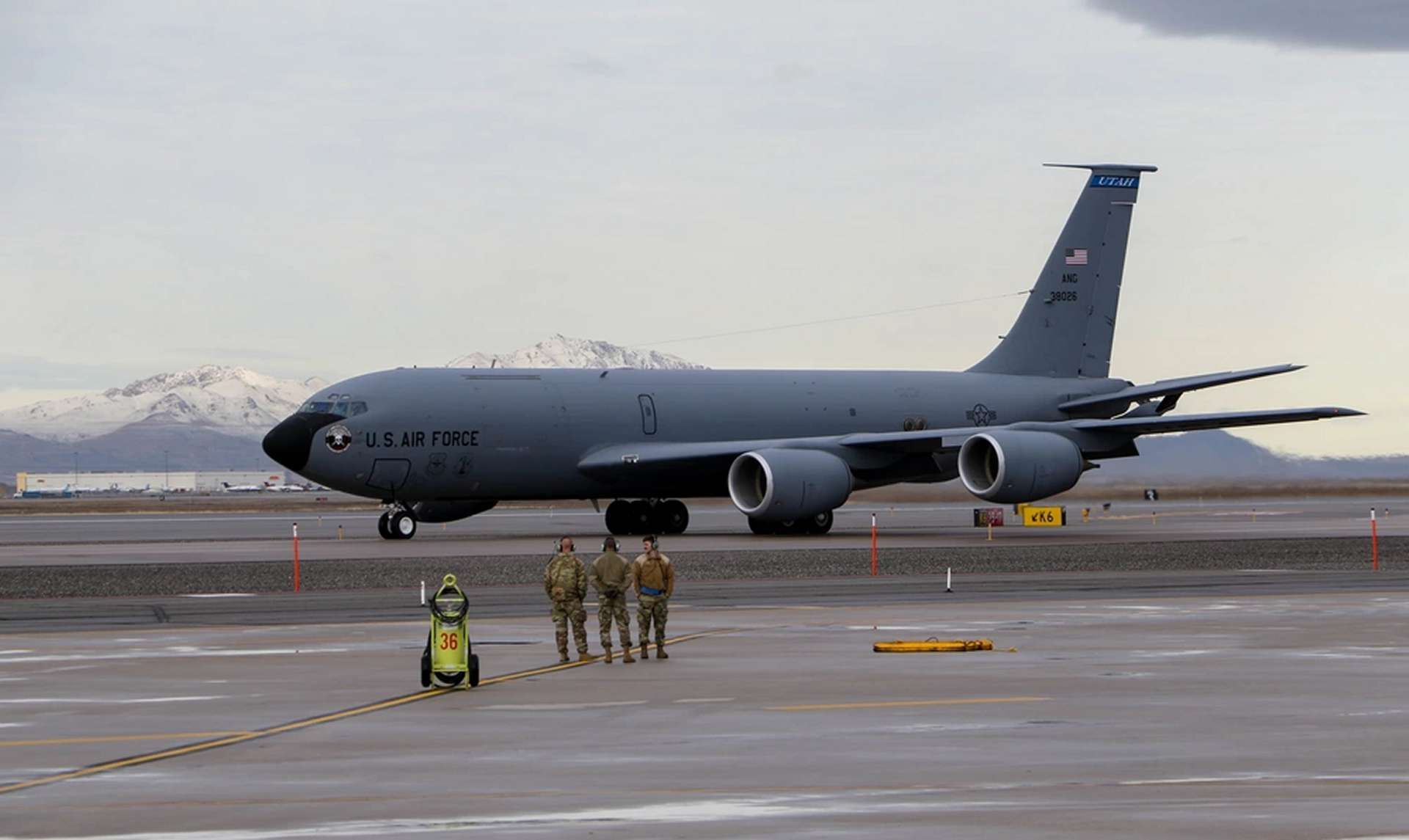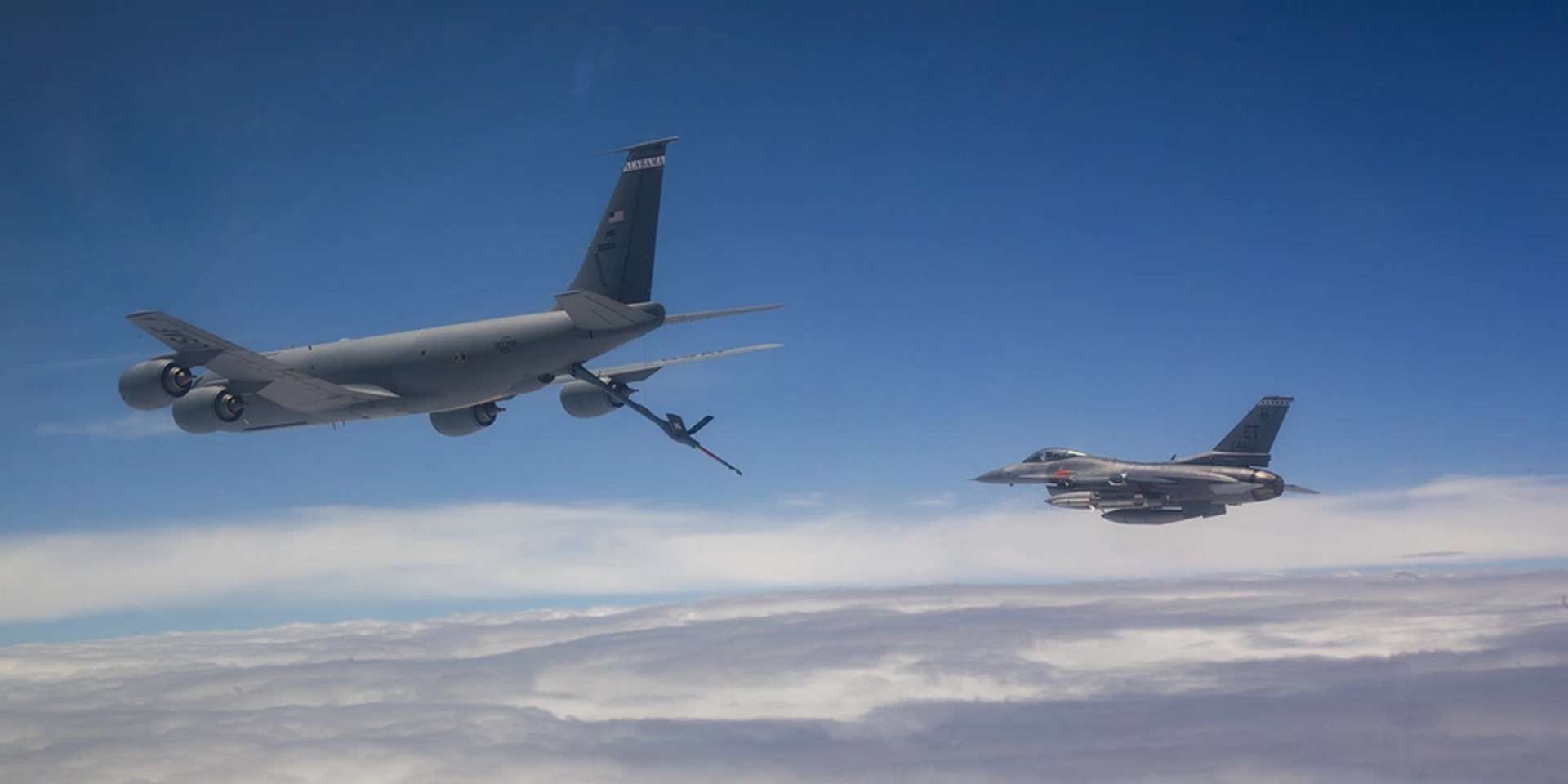Breaking News
Greek Air Force plans to buy four US Boeing KC-135R Stratotankers.
According to exclusive information from OnAlert on August 2, 2024, the Hellenic Air Force (HAF) recently sent an official request to U.S. authorities expressing interest in acquiring up to four used Boeing KC-135R Stratotanker aerial refueling aircraft through the Excess Defense Articles (EDA) program from the U.S. Armed Forces' surplus.
Follow Army Recognition on Google News at this link

The Hellenic Air Force (HAF) seeks further information regarding the availability of up to four KC-135R Stratotankers refueling aircraft, based on the US Air Force's list of surplus aviation assets available for free transfer via the EDA program. (Picture source: US DoD)
The Hellenic Air Force (HAF)'s request is based on the USAF's list of surplus aviation assets available for free transfer via the EDA program, which includes several KC-135R refueling aircraft. The HAF seeks further information regarding the availability of up to four of these aircraft to meet its operational needs. Additionally, the HAF has inquired about the condition of the aircraft offered for free transfer, the equipment they will come with, the cost of potential repairs and restoration, technical support for the KC-135R, and training for both pilots and ground technicians.
The interest in acquiring aerial refueling tankers is part of the HAF's broader strategy to enhance its capabilities. These tankers have been included in the force structure plan as outlined by the Hellenic National Defense General Staff (GEETHA) and approved in 2021. This move will enable HAF fighter jets to remain airborne for extended periods, reach distant targets from their bases, and participate in various missions, including interception, escort operations, deep-strike missions over enemy territory, and maritime operations in the Eastern Mediterranean, from Cyprus to the African coasts. This capability would allow the HAF to maintain continuous control over every corner of the Athens FIR and Greece's Exclusive Economic Zone (EEZ) without the need to return to base for refueling.
For many years, HAF pilots operating F-16s of all variants, French Mirage jets, and now Rafale aircraft have been familiar with and have executed aerial refueling operations. In recent years, they have been intensively trained with American, French, and primarily Israeli tankers from the Armée de l'Air and the Israeli Air Force, respectively. Nearly all Greek pilots are already certified in aerial refueling procedures. To maintain their certification and readiness, pilots must perform aerial refueling at least once a year, and for night refueling operations, the interval is reduced to six months due to the increased difficulty. The Air Staff places significant importance on aerial refueling, as the operational theater of the HAF has expanded beyond the confines of the Aegean Sea.
The Boeing KC-135R Stratotanker aircraft can refuel all types of HAF fighter jets, including F-16s, Mirages, Rafales, and potentially the F-35s that Greece plans to acquire. Should these aircraft be procured, their most likely bases would be Souda or Kasteli in Crete. Notably, the Turkish Air Force has been operating aerial refueling tankers for at least two decades, specifically seven new Boeing KC-135R aircraft.

Featuring a narrower fuselage and shorter length compared to the 707, the KC-135 was internally designated as Model 717 by Boeing, though this number was later assigned to a different aircraft. (Picture source: US DoD)
The development of the KC-135, a military aerial refueling aircraft, began in the 1950s, during the US Air Force (USAF)'s operation of the KC-97 Stratofreighter. This piston-engined tanker had several limitations, including a mixed gasoline/kerosene fuel system and a slower cruise speed, which necessitated a jet-powered tanker.
The KC-135, derived from the Boeing 367-80 "Dash-80" prototype, won the USAF's competition for its first jet-powered refueling tanker in 1954, leading to an initial order of 29 KC-135As, with the first aircraft flying in August 1956, and the last KC-135 delivered in 1965.
The Boeing KC-135 Stratotanker was developed from the Boeing 367-80 prototype alongside the Boeing 707 airliner. Featuring a narrower fuselage and shorter length compared to the 707, the KC-135 was internally designated as Model 717 by Boeing, though this number was later assigned to a different aircraft.
The KC-135 has undergone significant engine retrofits over its service life. Originally equipped with Pratt & Whitney J57-P-59W turbojet engines, a modification program in the 1980s retrofitted 157 Air Force Reserve and Air National Guard tankers with Pratt & Whitney TF33-PW-102 turbofan engines, resulting in the KC-135E. Another major modification program retrofitted 500 aircraft with CFM International CFM56 high-bypass turbofan engines, resulting in the KC-135R and KC-135T. These new engines increased thrust, fuel efficiency, and operational range while reducing noise levels.

The Stratotanker's design includes 35-degree aft swept wings and tail, four underwing-mounted engines, and a distinctive horizontal stabilizer. (Picture source: US DoD)
The aircraft's design includes 35-degree aft swept wings and tail, four underwing-mounted engines, and a distinctive horizontal stabilizer. Various reconnaissance and command post variants, including the RC-135 and EC-135, were operated by the Strategic Air Command (SAC) until their reassignment to Air Combat Command (ACC) in 1992.
Avionics upgrades have also been implemented to enhance the KC-135's capabilities. The Pacer-CRAG program, conducted between 1999 and 2002, eliminated the navigator position from the flight crew and updated the fuel management system. The Block 45 upgrade, which began delivering modified aircraft by January 2017, introduced a new glass cockpit digital display, digital autopilot, and updated flight director systems.
Various other upgrades have been made, including the KC-135Q variant, modified to carry JP-7 fuel for the SR-71 Blackbird. Eight KC-135R aircraft are receiver-capable, allowing them to perform force extension and special operations missions. The Multi-point Refueling Systems (MPRS) modification adds refueling pods to the KC-135's wings, enabling the refueling of U.S. Navy, Marine Corps, and NATO aircraft using the probe and drogue method.
The KC-135 entered service in 1957 and remains operational to date, as one of the few military fixed-wing aircraft with over 60 years of continuous service with its original operator. Initially designed to refuel strategic bombers as a force multiplier, the KC-135 has seen extensive use during the Vietnam War and subsequent conflicts, such as Operation Desert Storm, to extend the range of various US tactical fighters and bombers.
Supplemented by the larger KC-10 Extender, many KC-135s are expected to remain in service until 2030 despite rising maintenance challenges over the years, with costs growing significantly. In fact, studies have shown that the fleet can remain in service for several more decades. The USAF has initiated programs to gradually replace the KC-135 with newer aircraft, such as the KC-46 Pegasus, while international operators like France and Singapore have transitioned to the Airbus A330 MRTT.

The Boeing KC-135R Stratotanker can refuel all types of HAF fighter jets, including F-16s, Mirages, Rafales, and potentially the F-35s that Greece plans to acquire. (Picture source: US DoD)
The Boeing KC-135R Stratotanker is crewed by three members: a pilot, co-pilot, and boom operator, with some missions requiring the addition of a navigator. It has the capacity to carry up to 80 passengers or a payload of 37,650 kilograms, or alternatively, six 463L pallets, showcasing its dual role as both a refueler and a cargo transporter.
The KC-135 has a length of 41.53 meters, a wingspan of 39.88 meters, and a height of 12.70 meters. The wing area is 226.0 square meters, with airfoils designed as BAC 310/311/312 at the root and BAC 313 at the tip. Its empty weight is 44,630 kilograms, and it has an operating empty weight of 56,245 kilograms. The aircraft can take off with a maximum weight of 146,284 kilograms, and it has a significant fuel capacity of 90,718 kilograms.
Powered by four CFM International F108-CF-100 turbofan engines, each producing 96.2 kN of thrust, the KC-135 can achieve performance metrics such as a maximum speed of 933 km/h, cruising comfortably at 852.8 km/h at an altitude of 9,144 meters. Its range with 68,039 kilograms of transferable fuel is 2,414.1 kilometers, and it has a ferry range of 17,727 kilometers. The aircraft's service ceiling is 15,000 meters, and it can climb at a rate of 25 meters per second.
These characteristics enable the KC-135 to perform its primary mission of mid-air refueling with efficiency and reliability. The aircraft’s design and engines allow it to take off at high gross weights and operate at near-sonic speeds, ensuring that it can refuel other aircraft without requiring them to slow down significantly or descend to lower altitudes, where fuel consumption would be higher. This combination of fuel capacity, operational flexibility, and speed makes the KC-135 Stratotanker a valuable asset for the USAF and its allied partners, despite being nearly 70 years old.


























